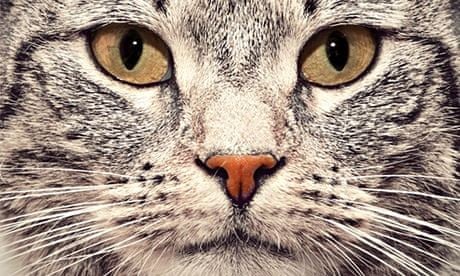Scientists have recruited a new ally in their battle to fight disease: domestic moggies. They believe the genetic profiles of cats contain crucial clues about diseases to which humans and felines are both susceptible. These illnesses include diabetes, asthma and some causes of blindness.
To exploit the connection, researchers have launched a genome sequencing project, called 99 Lives, which aims to determine the exact genetic profiles of 99 domestic cats. The results should provide them with data that could generate new medicines for treating both cats and humans for such illnesses, they say. In addition, the project should provide data that will help zoologists track down the evolutionary origins of the domestic cat.
“Until now, genetic research on humans’ companion animals – pets such as dogs, cats and rabbits – has concentrated, almost exclusively, on dogs,” said Stephen O’Brien, a geneticist based at the Theodosius Dobzhansky Centre in St Petersburg.
“There has been widespread sequencing of canine genomes, as a result. Given dogs’ susceptibilities to certain cancers, the benefits were clear. But cats were ignored, and that was wrong, for they suffer from many diseases that humans also contract, from diabetes to the feline form of Aids. They have a lot to tell us.”
An example of this shared susceptibility to disease is provided by polycystic kidney disease (PKD), a key cause of renal failure in cats and in elderly people.
In 2004 a team led by Professor Leslie Lyons, of the University of Missouri, discovered that the genetic mutations that cause the disease occur in the same gene in humans and cats.
“That has given us a new approach to studying the disease,” Lyons said. “We are now studying other parts of the cat genome to see if these pieces of DNA have an influence on the speed and severity of the spread of PKD in an animal.
“There is a lot of variation both among cats – and among humans – in the way that PKD takes effect. And once we understand these influences we may able to design drugs that could counter PKD, and then test them on cats. That will be of help for both cats and humans. In addition, the discovery has allowed us to create a test to let breeders know if a cat is susceptible to kidney disease and so help create future breeds that will be unaffected by the condition.”
However, when it came to looking at other diseases shared by humans and cats, scientists found there was a lack of genetic information. The first full canine genome was worked out in 2005 and the DNA of dozens of other dogs of various species has been sequenced since. By contrast, the first full genome of a cat – an abyssinian called Cinnamon – was not published until late 2014, the journal Nature revealed last week.
As a result Lyons has launched 99 Lives. Anyone with a cat can provide specimens of blood or other tissue, although the organisation – which is seeking funding support – will charge an owner $7,500 (£5,000) to become involved in the project. “We already have specimens from about 40 cats and are now sequencing their genes,” said Lyons.
The project will allow researchers to trace, in detail, the origins of the house cat. Most experts believe its domestication began in the Near East, about 10,000 years ago, when wild cats were attracted to the rodent-ridden grain stores created by the first farmers. Cats gathered to kill mice and rats, produced lovable kittens and were accepted into the homes beside the grain stores.
As agriculture spread, cats travelled with these early farmers. Thus Europe’s domestic tabby is likely to be related to the Arabian wild cat.
“That is the rough picture we have,” said cat genome researcher Razib Kahn, an evolutionary geneticist at the University of California, Davis.
“However, the detail is not clear. Genome sequences should help us understand exactly how cats arrived in our homes and tell us how much they have changed over the millennia in which they have been sharing their lives with humans.”

Comments (…)
Sign in or create your Guardian account to join the discussion